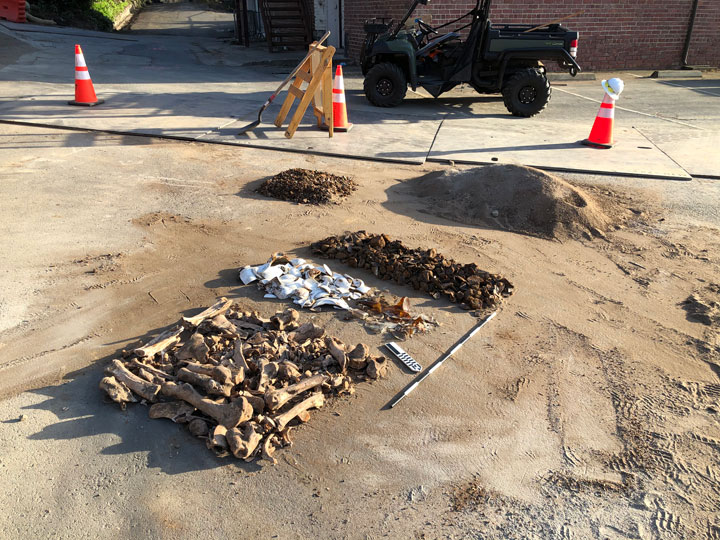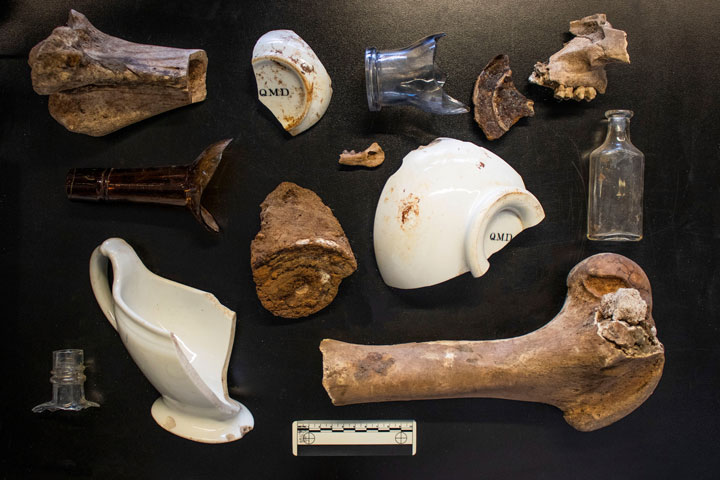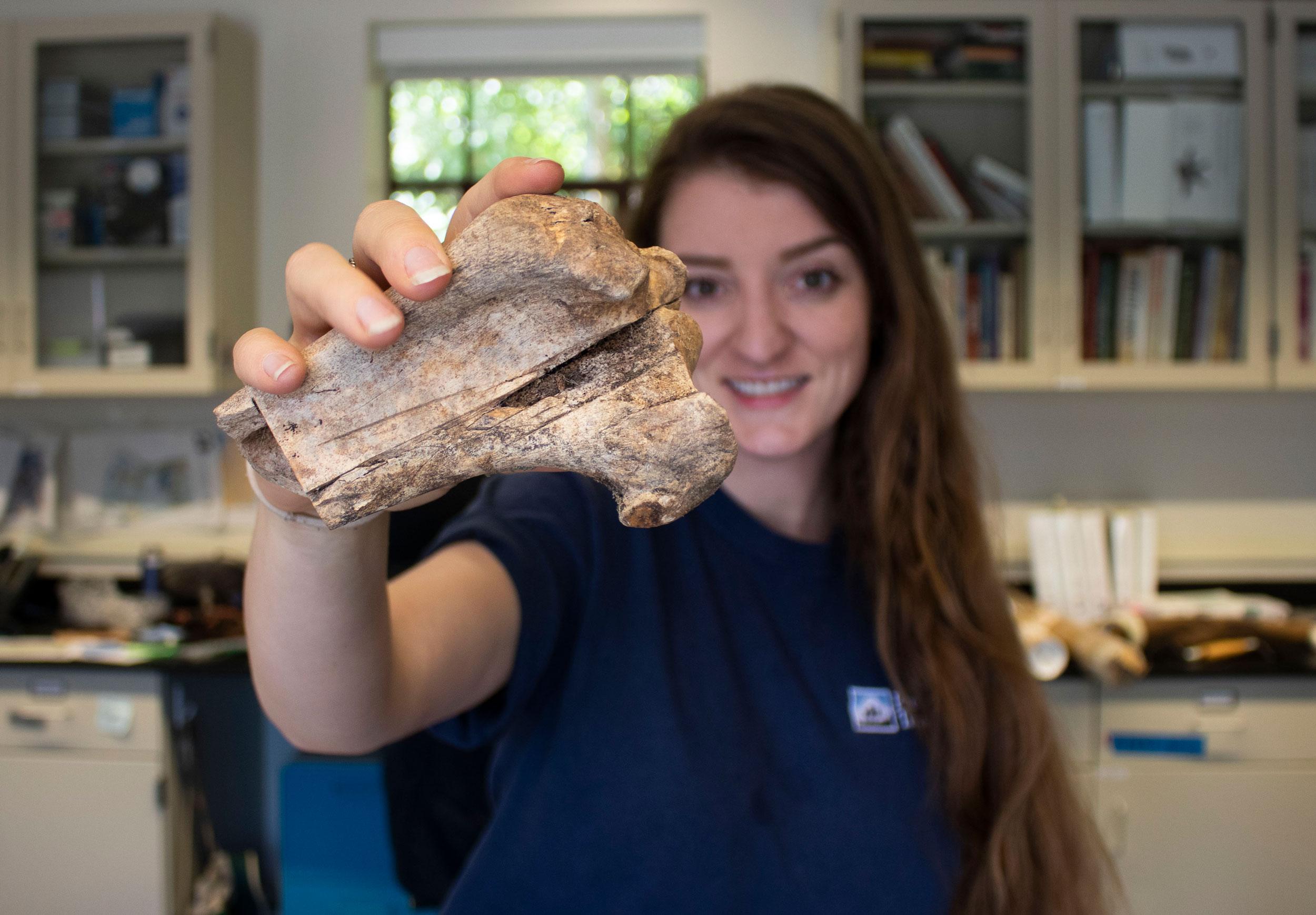Apr 29, 2021
Presidio Archaeologists Discover Old-timey Military Garbage
Learn about the stories that garbage can tell about life in the Presidio.Over the years, the Presidio’s Archaeology team has continued to dig deep in the dirt to learn about the history of the Presidio through the Army’s old trash.
During the installation of a new storm drain, construction crews uncovered artifacts (AKA “refuse”) beneath an electrical duct and the Archaeology team collected more than 1,000 artifacts from the trench, including an assortment of animal bones (mostly cow as well as some pig teeth and other small mammal), metal cans, glass bottles, and ceramics.

“By researching the maker’s mark of ‘QMD’ (Quartermaster Department) on the bottom of the ceramics and analyzing the technologies used to manufacture the glass bottles, the Archaeology team determined the trash likely dates between 1890-1912 when the Army began disposing of waste in larger-scale landfills and moving away from individual household trash disposal (in outhouses and backyard pits),” Presidio Archaeological Specialist Georgie DeAntoni shared.
With the move from small scale dumps to landfills, burning trash in incinerators to our modern practices of reducing, reusing, and recycling for a greener future and park, the ways that the Presidio has dealt with trash can tell us a lot about how the Presidio changed over the years, and our evolving cultural values.

“Finds like these help us to think deeply about our own methods of waste disposal – including where we leave it, how much we leave behind, and how long might it remain there,” Georgie shared.
What do you think future archaeologists might learn about you based on the trash you throw away?
(Archaeological Specialist Georgie DeAntoni pictured in header.)
